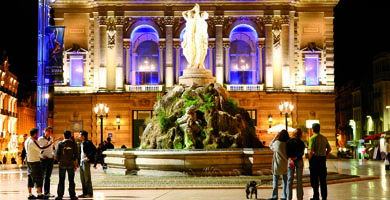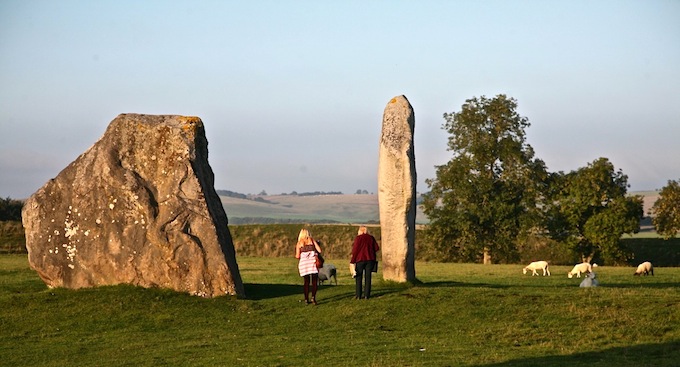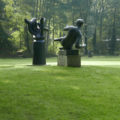DESTINATION: Revisiting the South of France
Michael Webb rediscovers the South of France.
Ages ago I honeymooned in St -Tropez and attended the Cannes Film Festival for several years, but the Mediterranean coast has become increasingly overbuilt and overcrowded. The wild landscapes, inland towns, and hill villages of Languedoc and Provence are a far better bet if you are searching for beauty, authenticity, and value.
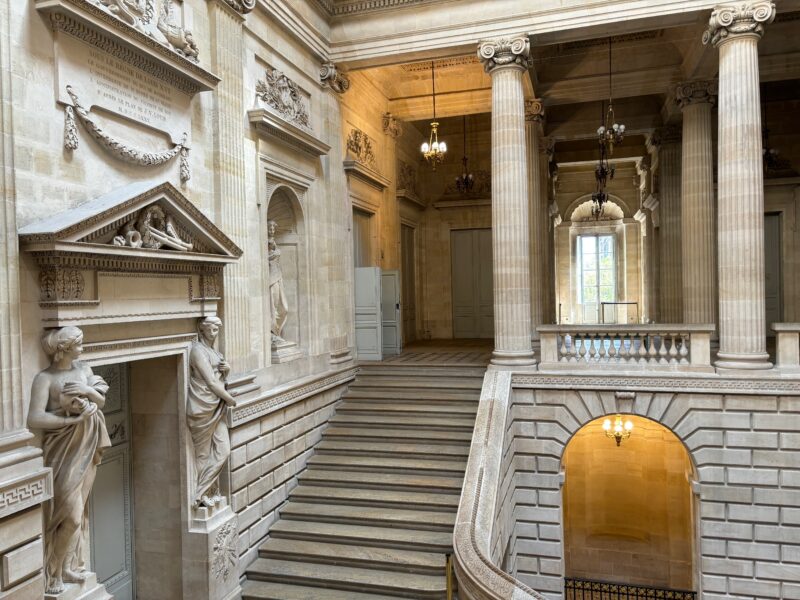
Bordeaux Grand Theatre // Credit M.Webb
In April, a couple of friends and I drove from Bordeaux to St-Paul-de-Vence, spending nights in the St-Emilion wine country, St-Rémy-de-Provence, Pernes-les-Fontaines and Aix-en-Provence. The sun shone and in the last few days the mistral started blowing, a cold blast of air down the Rhone Valley that leaves the air crystal-clear. Hotels and restaurants were only half-full; the tourist tide flows from mid-May to mid-September when the region is often uncomfortably hot and wildfires can scorch the forests. One caveat: the centers of many historic cities have become impenetrable labyrinths for non-resident drivers. You are urged to park, then rent a bike or walk. Montpellier is a maze of one-way streets and barriers that even natives find hard to navigate.
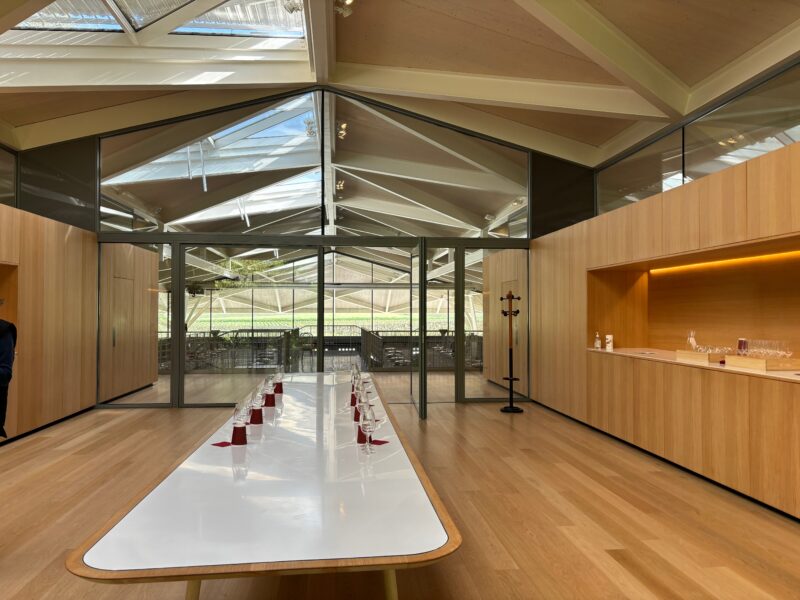
Chateau Margaux // Photo: M.Webb
The center of Bordeaux was rebuilt in the 18th century using the handsome local stone, and the Grand Théâtre epitomizes the pride of a prosperous port city. Try to catch an opera or dance performance and dress up for the occasion. From the columned façade crowned with statues to the soaring vault over the foyer and the horseshoe auditorium, the experience lives up to the name. In contrast to this historic pomp, Le Corbusier created a model town for workers in the suburb of Pessac that is a model of enlightened planning. Legendary wineries are scattered in an arc around the city, from St-Émilion to Entre-Deux-Mers. We toured Château Margaux—a wine that Thomas Jefferson favored above all others when he served as the first US Ambassador to France. Its history goes back several centuries, but the signature chateau was built for a rich Parisian who bought the property in the 1810s. A decade ago, Norman Foster added a new chai for white wine–an airy, light-filled space supported on branching steel trees–and a new “library” that preserves a few bottles of every varietal and vintage. In the cooperage workshop oak barrels are made from scratch in the traditional way.
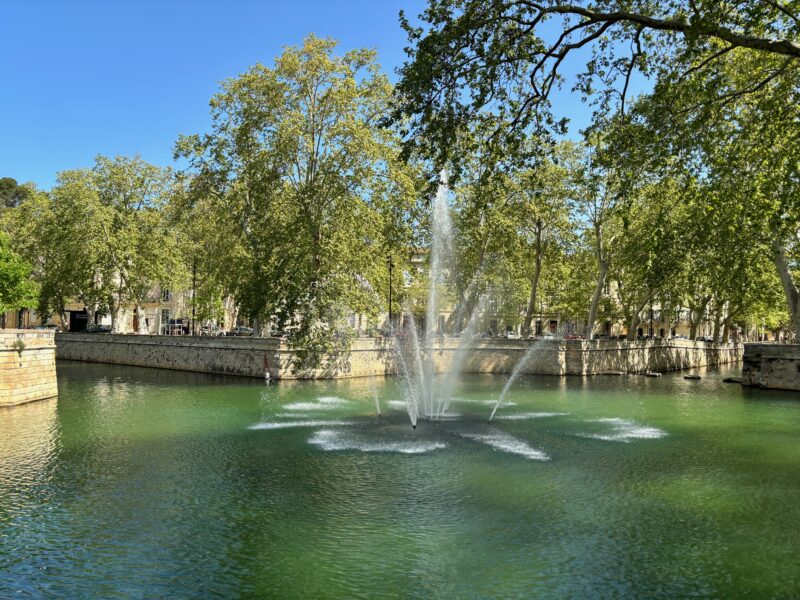
Nimes Jardin des Fontaines // Photo: M.Webb
The Romans founded the city of Nîmes, bequeathing an arena and the Maison Carrée, a small, impeccably restored temple. Foster complemented it with a graceful museum of contemporary art. The city has been refurbished and rewards leisurely strolls, especially in the Jardin de la Fontaine, a park flanked by a walled, tree-lined canal. From Nîmes you can drive through the Camargue, a marshland that is home to wild, white ponies and the gypsy church of Stes-Maries-de-la-Mer. We continued on to St-Rémy-de-Provence, an exquisite small town with a pedestrian street, the rue Carnot, that curves gently downhill and is paved with smooth river rocks with a central marble gutter to carry off rainwater. Everywhere in Provence you should watch where you are walking; even the humblest streets can be beautifully paved and polished smooth by centuries of use.
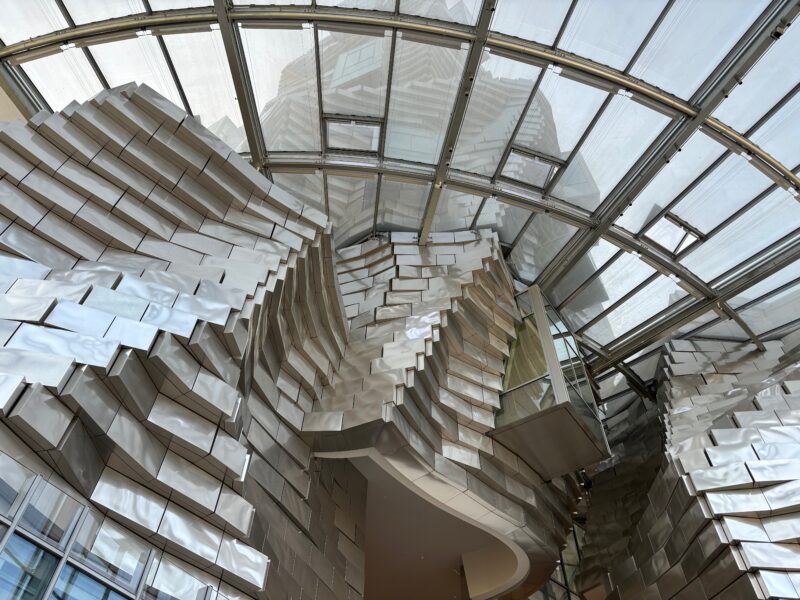
Aries Luma // Photo: M.Webb
The stand-out in Arles is St-Trophîme, a Romanesque church dedicated to an obscure local saint. Facing onto a central square, the west façade is fantastically carved with saints, sinners, lions and devils, and there’s a jewel-like cloister to one side. On the outskirts of the city, a factory has been transformed into Luma, a mecca for the art of photography. Frank Gehry created an asymmetrical tower of silvery blocks that emerges from a glass rotunda and houses galleries, an adventurous restaurant and a viewing platform overlooking the city. Warehouses have been converted into galleries for summer exhibitions and the grounds have been landscaped with mature trees. An exit from the A8 autoroute brings you to a secluded treasure, the former Cistercian abbey of Le Thoronet. Noble and austere, it has inspired John Pawson and other modern architects. It’s a joy to listen to plainsong in the soaring nave and to explore the cloister and chapter house in utter stillness. Though the monks left after the French Revolution their spirit still animates the place.
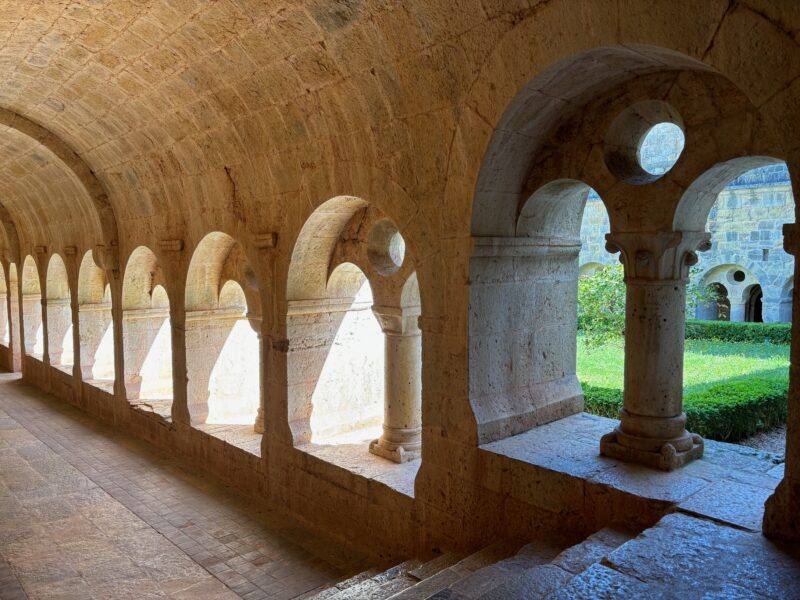
Abbaye Le Thoronet // Photo: M.Webb
The village of St-Paul-de-Vence offers a treacherous ascent of polished pebbles and is a tad too precious, but it’s worth staying close by for two modern gems, the Fondation Maeght, a stunning complex of art galleries and courtyards with a fine display of sculptures by Miro and Giacometti, and the Rosary Chapel in Vence that was designed by Henri Matisse. And it’s a good base from which to drive an hour east to Roquebrune-Cap-Martin, where Eileen Gray and Le Corbusier built their summer houses. You walk along a narrow path from the station, down steep steps to find her hugely inventive white villa, newly restored and refurnished, and his log cabin. The master died while swimming in the rocky cove below and is buried, alongside his wife, in the cemetery high above.
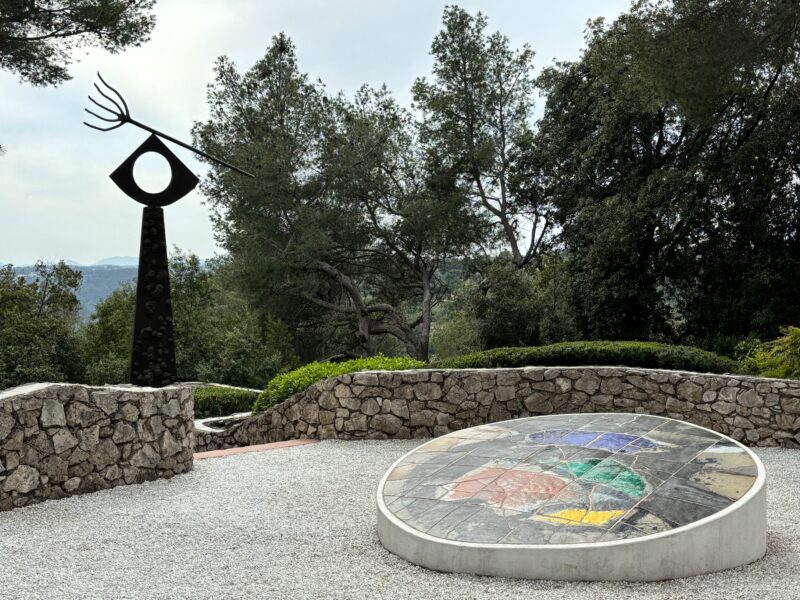
St Paul de Vence Fondation Maeght // Photo: M.Webb
Art, landscape and vineyards converge at the Château-La-Coste, an expansive winery that incorporates a fine collection of contemporary architecture and sculpture. Highlights include Tadao Ando’s café-visitors center and chapel, Gehry’s Serpentine Pavilion (brought here from London), and a heroically cantilevered gallery by the late Richard Rogers that recalls the colorful exuberance of the Pompidou Center in Paris. The estate is worth a day for those with the energy to walk and it’s a short drive from Aix-en-Provence. This was our last stop, chiefly for the joy of driving the Cézanne Route that encircles Mont-St-Victoire, the painter’s favorite subject. The clarity of the light was extraordinary. As Monet wrote to a friend from Antibes in 1884: “One swims in blue air; it is frightening.”
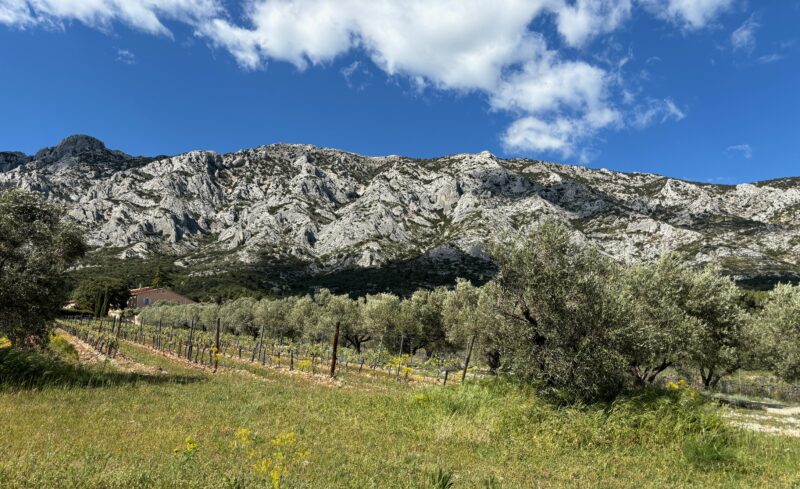
Aix en Provence Route Cézanne // Photo: M.Webb
Recommended places to stay
Montagne: La Maison de Millie
Villevieille: Château de Pondres and La Canopée restaurant
St Rémy-de-Provence: Hôtel Gounod
Pernes-les-Fontaines: Hôtel L’Hermitage
St. Paul de Vence: Hôtel les Messugues
Aix-en-Provence: Aquabella Hotel and Spa & L’Orangérie restaurant
Recommended restaurants (check menus and make reservations online):
St Emilion: L’Envers du Décor
Montagne: Le Clos Mirande
St-Rémy-de-Provence: Chapeau de Paille
Pernes-les-Fontaines: Au Fil de Temps
Vence: La Casolette
St Paul-de-Vence: Le Tilleul
Aix-en-Provence: Les Inséparables and Le Vintrépide
Michael Webb
around the world.
Latest posts by Michael Webb
- DESTINATION: Revisiting the South of France - April 30, 2024
- Exploring the Czech Republic - January 29, 2024
- Rediscovering Morocco - April 6, 2022


